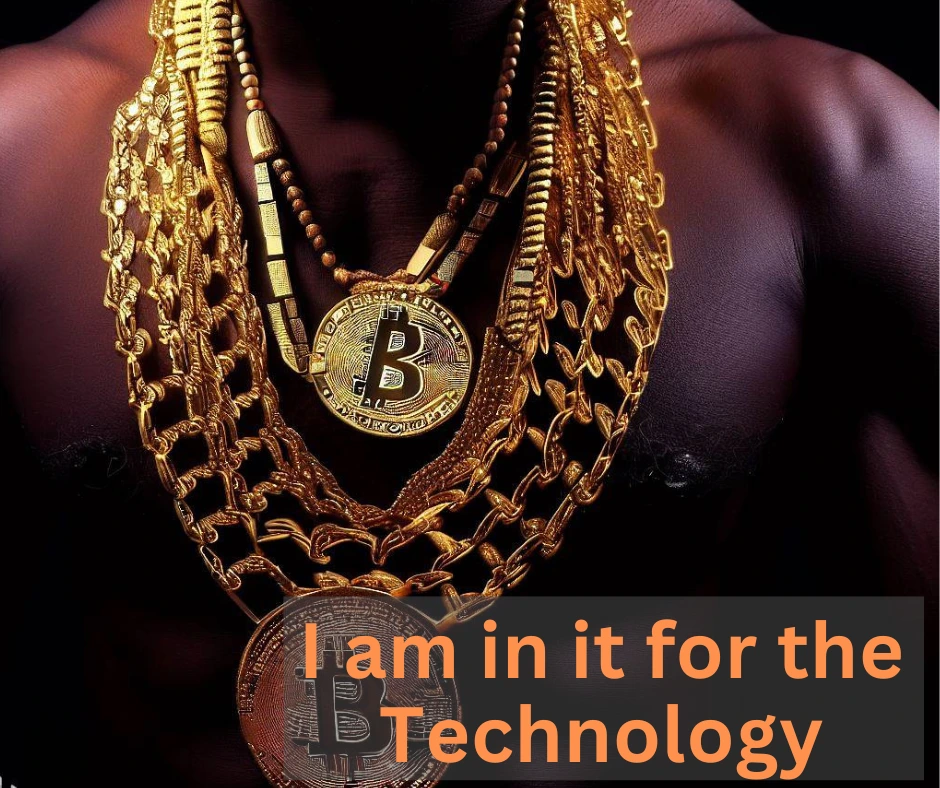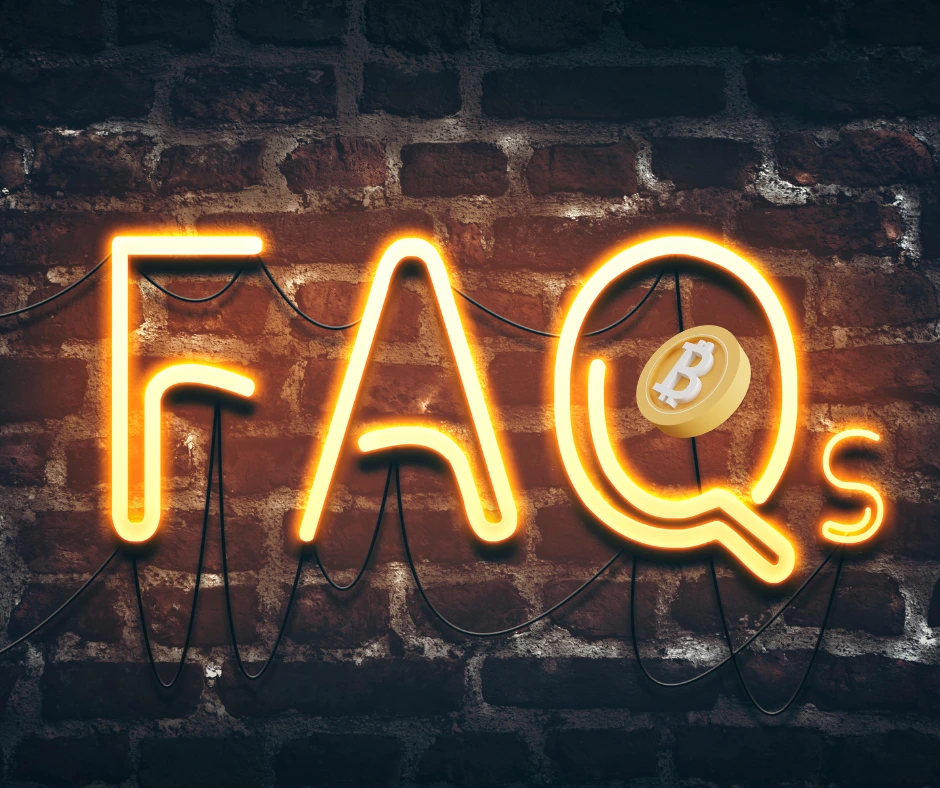Have you ever tried to read the Bitcoin Whitepaper and felt it was written in a foreign language? You’re not alone. The original document introducing the world to cryptocurrency can be confusing and intimidating, full of technical jargon and complex mathematical concepts.
Introduction
The first Bitcoin whitepaper, written under the pseudonym Satoshi Nakamoto in 2008, proposed a new electronic payment system allowing for trustless transactions without needing third-party services like banks.
In this simplified guide to the Bitcoin whitepaper, we will explore its purpose and key concepts. We will delve into topics such as transactions, proof of work (called Bitcoin mining), timestamp servers, and more.
By understanding these concepts, you’ll better grasp how cryptocurrencies like Bitcoin work and why they hold so much promise as an alternative to traditional financial institutions.
So let’s start at the beginning – why was there a need for a decentralized currency in the first place?
Understanding The Purpose And Importance Of The Bitcoin Whitepaper Simplified
The Need For A Decentralized Currency

Traditional currency and settlement systems rely on trusted third parties like banks or financial institutions to verify transactions and ensure their accuracy. However, this can lead to high fees, long processing times, centralization of power, and vulnerability to fraud or hacking.
By creating a decentralized system based on cryptography and CPU power rather than trust in the middleman, Bitcoin aims to solve these issues. It has given rise to new possibilities for digital currency as an alternative store of value that is not controlled by any centralized authority.
Key Concepts Explained In The Bitcoin Whitepaper Simplified
Transactions
Transactions are the lifeblood of the Bitcoin network. In simple terms, a transaction is when one user sends Bitcoin to another. Transactions are processed by network nodes, verifying and validating each transaction before adding it to the blockchain.
Each transaction includes inputs and outputs. The inputs are usually previous transactions validated by the network, while the outputs represent new transactions sent to other users.
Each input can only be used once in a transaction to prevent double-spending. If you want to send 1 BTC to someone else, but your address only has 0.5 BTC, you’ll need to use more than one input – possibly from different addresses – to compensate for the shortfall.
Once a transaction is created and broadcast across the network, it needs to be confirmed by nodes before it can be included in a block of transactions and added permanently to the blockchain.
Nodes use complex mathematical calculations (hash functions) based on the Proof of Work consensus algorithm to confirm transactions and ensure they’re valid.
Timestamp Server
Satoshi Nakamoto concludes that for a decentralized digital currency to work, there needed to be a way for transactions to be confirmed and recorded without relying on a central authority.
To solve this problem, the white paper proposes using a timestamp server.
This server would add timestamps to each transaction as they are received and broadcast across the network. These timestamps would help prevent double-spending by ensuring that each transaction is uniquely identified and recorded chronologically.
The timestamp also includes a nonce, simply a random number added to ensure each new block has a unique cryptographic hash.
Miners compete with each other to find this nonce through complex computations to get their blocks accepted by honest mining computers on the network.
Proof of Work (Mining)
This process involves using Computer power to solve complex mathematical problems that confirm transactions on the blockchain.
In simple terms, miners use their computers to find a hash value that meets certain criteria set by the network. This hash value and other transaction data are then added to a block and broadcast to the network for validation.
This process confirms transactions and helps secure the network against attacks from malicious actors who might try to manipulate or alter past transactions.
The miner who successfully solves the mathematical problem and confirms the block receives a reward in newly minted Bitcoin and any fees associated with that block.

The Network
The network would consist of nodes that confirm transactions and maintain a copy of the blockchain – a public ledger of all Bitcoin transactions. Each node has its copy of the digital ledger and can confirm new transactions by checking them against their copy.
To ensure everyone’s copy of the blockchain is in sync, each new block added to the chain must meet certain criteria. The block contains a list of transactions and a number called a nonce, which is added to make sure that it meets certain mathematical conditions.
Nodes compete with each other to find this nonce by using computational power. The first node to find it gets to add its block to the chain and collect fees and newly minted bitcoins. This process is known as mining.
The beauty of Satoshi’s design is that anyone can join or leave this network anytime without affecting its operation. As long as honest nodes control enough computing power on the network, they will always outpace an attacker who tries to take over or corrupt it.
By creating an incentive structure where miners are rewarded for validating transactions, Satoshi created a trustless system where no single entity controls every transaction on the network.
Incentive
Satoshi Nakamoto recognized that for a decentralized currency to work, people need to be incentivized to participate in maintaining and confirming transactions on the blockchain.
In short, Bitcoin miners are incentivized to confirm transactions by earning rewards in the form of newly created bitcoins. This process is called mining Bitcoin. Mining computers compete with each other to solve complex mathematical problems using their Computer power, and whoever solves it first gets rewarded.
As more miners join the network and compete for rewards, the difficulty level increases over time. This ensures that new blocks are added at a predictable rate and helps maintain stability within the system.
The incentive structure also encourages honest nodes to confirm transactions since they earn fees and block rewards.

Reclaiming Disk Space
One of the key benefits of Bitcoin is the way it handles saving disk space using data structures such as Merkle trees.
In traditional payment systems, transactions are recorded and stored indefinitely. This means that regardless of how old an electronic cash transaction is, it still takes up space on servers and hard drives.
Bitcoin solves this problem by allowing nodes to forget about transactions once they have been included in a block and verified by the network. This process, called reclaiming disk space, allows nodes to free up storage capacity without compromising the integrity or security of the digital ledger.
By keeping only relevant data on hand rather than storing every single transaction ever made in perpetuity, Bitcoin can operate more efficiently while ensuring greater privacy for users.
Simplified Payment Verification
Simplified Payment Verification, or SPV, is a method of verifying Bitcoin transactions that requires very little computational power and minimal data storage.
This allows users to easily and quickly confirm that a transaction has been included in the blockchain without downloading and storing the entire blockchain on their device.
SPV works by requesting only header information from full nodes on the network rather than downloading all transaction data. This header information includes the previous block hash, timestamp, and difficulty target for each block in the chain.
By confirming this limited amount of information, an SPV client can determine whether a particular transaction has been confirmed by looking at its position within the blockchain.
If enough nodes agree that a specific block contains a given transaction with no conflicting transactions present in other blocks, then it is considered valid.
The SPV process still involves some level of trust as you rely on others to provide accurate information about confirmed transactions.
However, because you’re not trusting any single node but instead relying on consensus across multiple nodes throughout the network, this approach greatly reduces your risk of getting incorrect information from malicious actors.
Overall, SPV helps make using Bitcoin more accessible for lower-powered devices such as mobile phones while still maintaining its trustless nature.
Combining and Splitting Value
Combining value refers to the consolidation of multiple inputs (e.g. different Bitcoin addresses owned by the same user) into a single transaction output. Meanwhile, splitting value involves dividing a single input into multiple outputs.
The reason for combining and splitting values is to optimize transaction fees. By consolidating inputs, users can reduce the number of transactions they need to make, ultimately lowering their overall fees. On the other hand, by splitting inputs into multiple outputs, users can send funds to multiple recipients while paying only one transaction fee.
The Bitcoin network supports both types of transactions – those that combine inputs and those that split them – making it easy for users to manage their funds efficiently.
Privacy
In traditional financial systems, third parties such as banks must confirm and process transactions, which can lead to sharing of sensitive information.
In contrast, the Bitcoin network allows transactions to be confirmed without revealing personal information about the sender or recipient.
Instead of using a bank account number or other identifying information, network participants use public and private keys to identify themselves.
This helps maintain anonymity while still allowing for secure transactions.
It’s important to note that while Bitcoin is often associated with anonymity, it’s not entirely anonymous since all transactions are publicly announced on the digital ledger.
Users can take additional measures to ensure privacy in their transactions, such as using mixing services or multiple wallets.
Calculations
This section provides important insight into how the network verifies transactions and maintains security.
One of the key concepts explained in this section is proof of work, which refers to the Computer power required to confirm the transaction and add it to the digital ledger.
Miners compete with each other to solve complex mathematical problems using their CPU power, with the first node that solves the problem being rewarded with new bitcoins.
This system ensures that no single entity can control or manipulate the network, as it requires significant computational resources to proven transactions.
As long as honest nodes control over 50% of the network’s Computer power, it remains secure and resistant to attack.
Other important calculations in this section include verifying digital signatures using public and private keys, determining inputs and outputs for a given transaction, and building a blockchain containing all proven transactions.
By understanding these calculations, you can appreciate the complex yet robust Bitcoin network.
Conclusion
In conclusion, the Bitcoin whitepaper explains how transactions can be made on a decentralized network without the need for a trusted third party.
Satoshi Nakamoto’s proposed system has since become a global phenomenon, with coins such as Bitcoin becoming increasingly popular as an alternative to traditional banking institutions.
While the original paper was only nine pages long, it laid the foundation for one of the most talked-about technological innovations in recent years: blockchain technology.
As we continue to see new advancements in cryptocurrency and blockchain technology, it’s important to remember that these innovations are built upon the ideas presented in Satoshi Nakamoto’s famous Bitcoin whitepaper.
The Future Of the Bitcoin Blockchain

As we look to the future of Bitcoin, it’s clear that there are still many challenges ahead.
One of the main concerns is scalability – as the network grows and more transactions are added to the blockchain, it becomes increasingly difficult for individual nodes to verify each transaction on time.
Another concern is security – while the blockchain itself is incredibly secure due to its use of cryptographic hashes and proof-of-work mining, there have been instances of exchanges and wallets being hacked or compromised.
As Bitcoin continues to gain mainstream attention, there will likely be increased efforts by bad actors looking to exploit vulnerabilities in the system.
Despite these challenges, however, I believe Bitcoin has a bright future.
Its decentralized nature makes it an attractive alternative to traditional financial systems, which rely on centralized institutions like banks or governments.
And as more people begin using cryptocurrencies for everyday transactions, we may see a shift away from traditional fiat currencies towards digital assets like Bitcoin.
Furthermore, advancements such as SegWit (Segregated Witness) and Lightning Network have already been implemented to make crypto transactions faster and more efficient while reducing fees.
These developments show promise for solving some of the scalability issues Bitcoin faces.
To learn more about Bitcoin and its impressive value increase over time, check out our article Bitcoin Value over Time: Exploring Price History.
Frequently Asked Questions

Q: What is the Bitcoin Whitepaper?
A: The Bitcoin Whitepaper is a document published in 2008 by an unknown person or group of people under the pseudonym Satoshi Nakamoto. It describes the technical details of the Bitcoin digital currency and the blockchain technology on which it is based.
Q: Why is the Bitcoin Whitepaper so important?
A: The Bitcoin Whitepaper proposed a new system of electronic cash that would allow online transactions to be made directly between parties without the need for intermediaries like banks. The ideas presented in the whitepaper led to the creation of the world’s first decentralized digital currency.
Q: What is the significance of Satoshi Nakamoto?
A: Satoshi Nakamoto is the pseudonym used by the person or group of people who authored the Bitcoin Whitepaper. The true identity of Satoshi Nakamoto remains a mystery, and many people believe that it is a pseudonym for a group of developers rather than a single individual.
Q: What is electronic cash?
A: Electronic cash is a system for making online payments that is similar to physical cash in that transactions are made directly between two parties without the need for intermediaries like banks. The Bitcoin Whitepaper proposed a system of electronic cash using blockchain technology.
Q: How does the Bitcoin network work?
A: The Bitcoin network is a decentralized system that uses blockchain technology to maintain a ledger of all Bitcoin transactions. Transactions are grouped together into blocks and added to the blockchain through a process called mining, in which users compete to solve a cryptographic puzzle to validate and add the block to the chain.
Q: What is the longest chain in the Bitcoin network?
A: The Bitcoin network operates based on the principle of the longest chain. This means that the valid chain with the most accumulated proof-of-work in terms of processing power dedicated to mining is considered the correct one.
Q: How is the white paper explained in the Bitcoin network?
A: The Bitcoin Whitepaper explained how transactions in the blockchain would work. It proposed a system where transactions would be validated by network nodes through cryptography and added to a chain of transactions. This chain would be open for anyone to verify and would ensure that no double-spending could occur.
Q: What is the role of timestamp in the Bitcoin network?
A: Each block in the Bitcoin network includes a timestamp that includes the previous block’s timestamp. This helps to ensure that the blocks are arranged in the correct order and that the entire blockchain is accurate.
Q: How are new transactions added to a block in the Bitcoin network?
A: Miners in the Bitcoin network are responsible for adding new transactions into a block. They do this by solving a cryptographic puzzle, which allows them to add their new block to the blockchain in exchange for a reward in Bitcoin.
Q: How do users identify themselves in the Bitcoin network?
A: Users in the Bitcoin network do not need to identify themselves to the network. Transactions are recorded on the blockchain using public keys, which are essentially anonymous addresses that do not reveal any personal information about the user.
Q: What is the concept of chain of transactions?
A: The concept of the chain of transactions is a fundamental aspect of the Bitcoin network. Each transaction in the network is recorded on the blockchain, which is essentially a chain of transactions. This chain is open for anyone to view and is maintained by nodes in the network.
